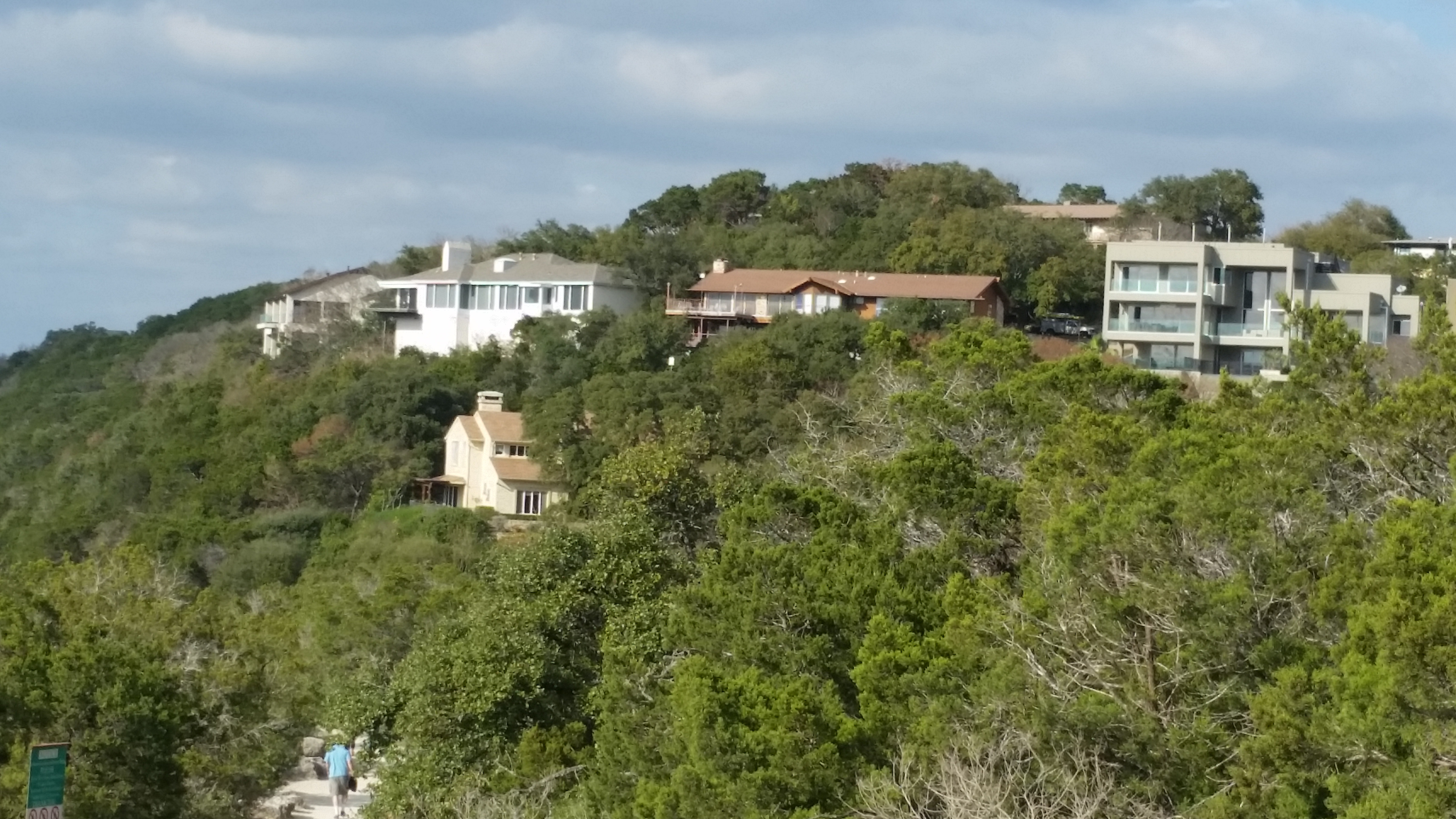
Austin, Texas
Austin is one of the fastest-growing cities in the country and boasts a population nearing 1 million in 2020. Austin also has high wildfire risk which is increasing with a warming climate and ongoing development in wildfire-prone lands. Outside of California, more structures are destroyed by wildfires in Texas than any other state in the country.
To bolster ongoing efforts to address climate-related risks such as wildfire, Austin applied to the CPAW program in 2016. Austin Wildfire Mitigation Program Manager Justice Jones and Wildland-Urban Interface Coordinator Mark Baker collaborated with city departments and community partners to spearhead the project.
The CPAW team worked closely with the City of Austin staff and local partners to develop key recommendations to integrate wildfire mitigation into the city’s land use planning and regulatory processes.
What did Austin do?
Since 2016, Austin has addressed CPAW recommendations and scored a number of community achievements:
Recommendation 1: Improve the city staff’s and public’s understanding of wildfire risk in the wildland-urban interface (WUI).
- Adopted a comprehensive Community Wildfire Protection Plan (CWPP);
- Refined wildfire risk analysis on a local level using an online wildfire-risk and vulnerable populations tool created by Headwaters Economics.
Recommendation 2: Include wildfire considerations in Austin’s environmental and planning policies.
- Formally included wildfire in public lands management plans and planning;
- Added wildfire-related considerations to Austin’s comprehensive plan and hazard mitigation plan;
- Added wildfire evacuation to Austin’s emergency operations plan;
- Developed wildfire pre-fire plans for Austin’s fire operations companies.
Recommendation 3: Improve land use regulatory tools to reduce wildfire risk.
- Adopted a wildland-urban interface (WUI) code;
- Offered recommendations for revisions to Austin’s land development code;
- A 2020 communitywide effort to address urban sprawl and historic inequities through zoning with a corresponding map has been delayed by litigation but is eventually expected to be completed. Austin Fire Department is following the process closely to make sure growth is directed to safe areas.
Recommendation 4: Improve wildfire-related coordination, capacity, and outreach.
- Created a wildfire division with staff dedicated to wildfire preparation, prevention, and mitigation;
- Developed a comprehensive wildfire strategic plan;
- Trained fire operations staff in basic wildland firefighting;
- Organized a local wildfire coalition;
- Participated in local and regional planning teams;
- Created a hub to report and share local-area wildfire mitigation efforts.
Lessons learned
Austin’s efforts culminated in adoption of a WUI code in Spring 2020 that requires wildfire mitigation measures for all new and proposed developments in high-hazard areas. For example, Class A roofs, home-hardening materials, defensible space, vent screens, and fencing within first 10 feet of structures must be built with ignition-resistant materials.
This major achievement required several years of educating city staff and the public, negotiating with the building industry and environmental community, meeting with stakeholders, and building trust.
Work continues in Austin to reduce wildfire risk. Asked to share lessons learned from the past four years, the Austin team offered several thoughts:
- It’s all about people and building trust. And it takes time. The Austin team spent countless hours meeting with the stakeholders, city staff, and the public. They brought in respected third-party speakers and experts to address people’s questions. They developed clear, science-based risk maps that people agreed upon. They listened carefully and responded to real concerns – for example, the builders were more concerned about building delays caused by requiring fire-safe materials than they were about the cost.
- Build on existing partnerships. For example, Austin worked with their city arborist to ensure defensible space standards and the potential removal of vegetation did not conflict with other regulations and standards.
- Start with voluntary measures. To encourage consideration of using ignition-resistant building materials, the Austin team focused on Green Builders using voluntary compliance, later expanding to all builders. Voluntary compliance provided on-the-ground examples of how a broader program might work.
- Identify local champions and build coalitions. A grassroots alliance of community members can be pivotal in encouraging city councils and elected officials
Snapshot
- 2016 CPAW Community
- Population (2014): 912,791
- Growth Rate (2000-2015): 31.6%
- Fuel Type: Dry-climate grass, juniper shrub, juniper woodland, mixed juniper hardwood
“The CPAW report is comprehensive, concise and action oriented. We will definitely leverage this great tool for addressing our wildfire resiliency through planning.”
Justice Jones
Wildfire Program Manager, Austin Fire Department
